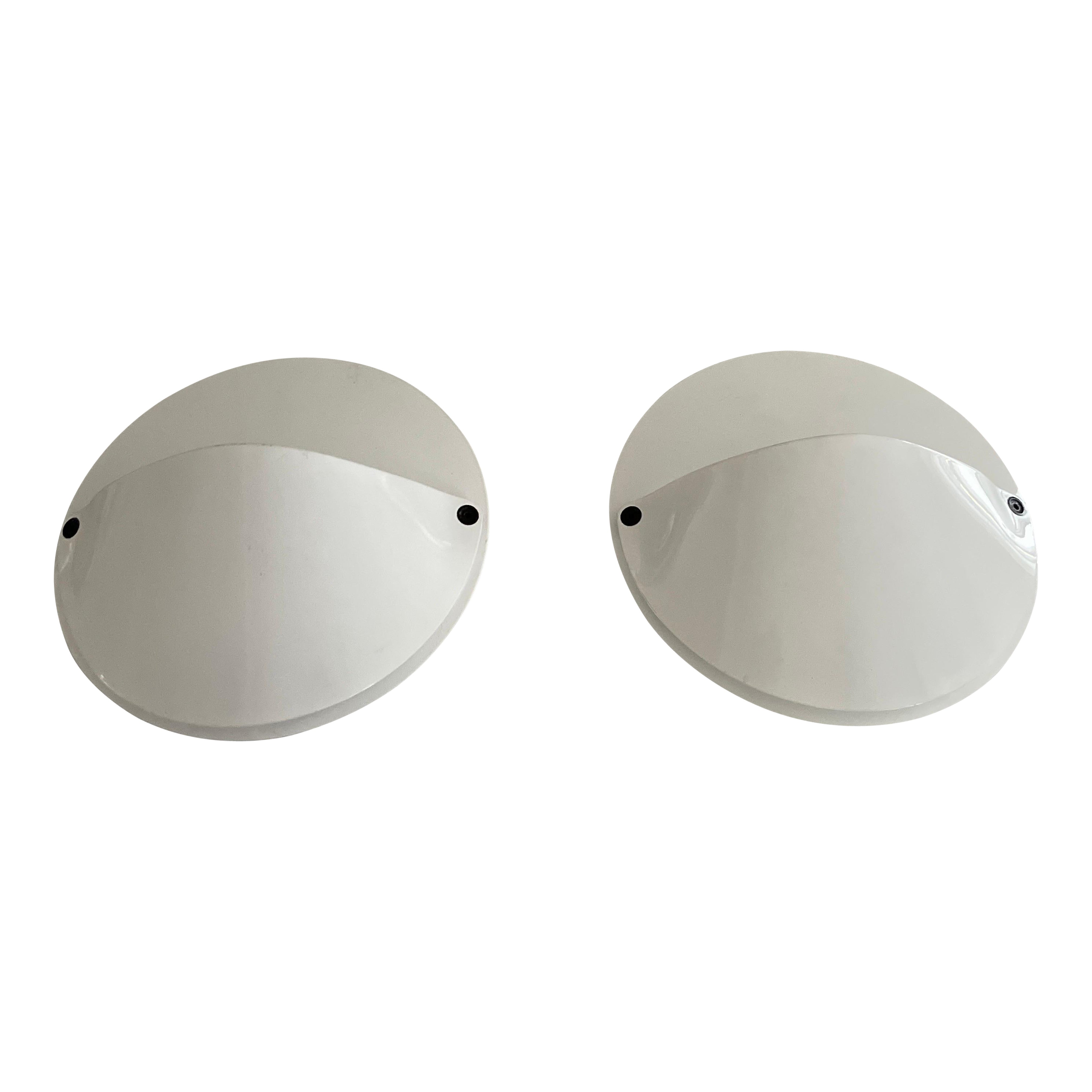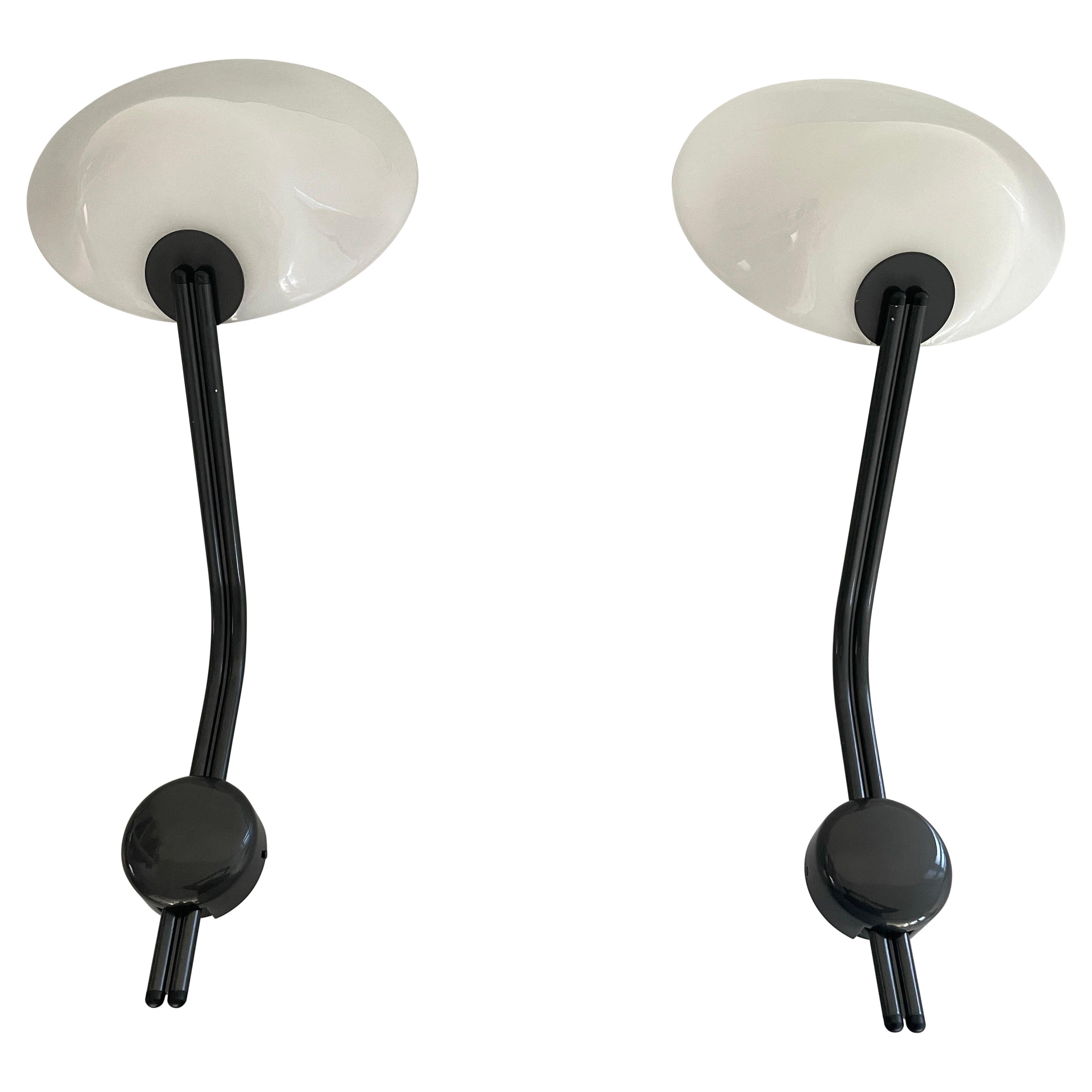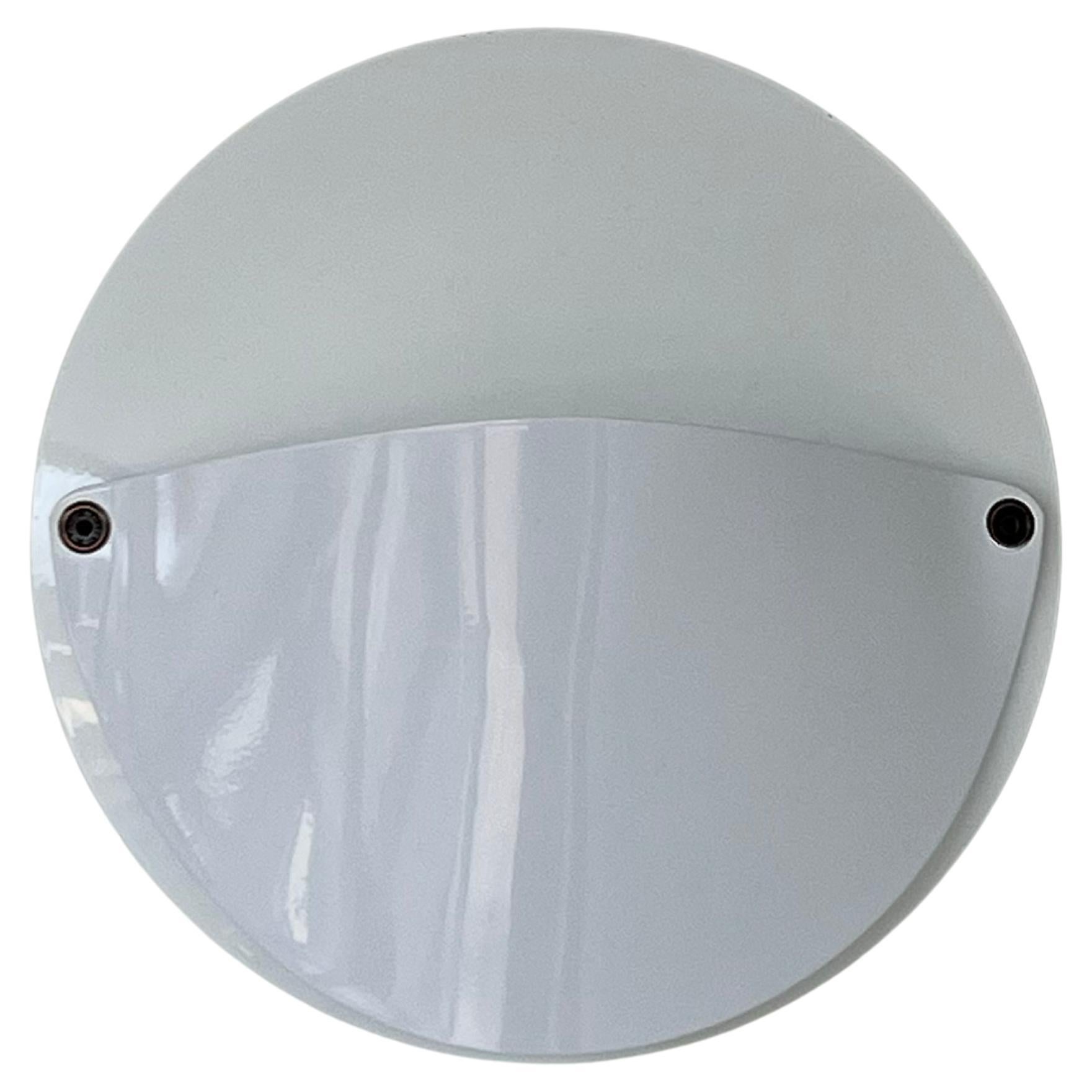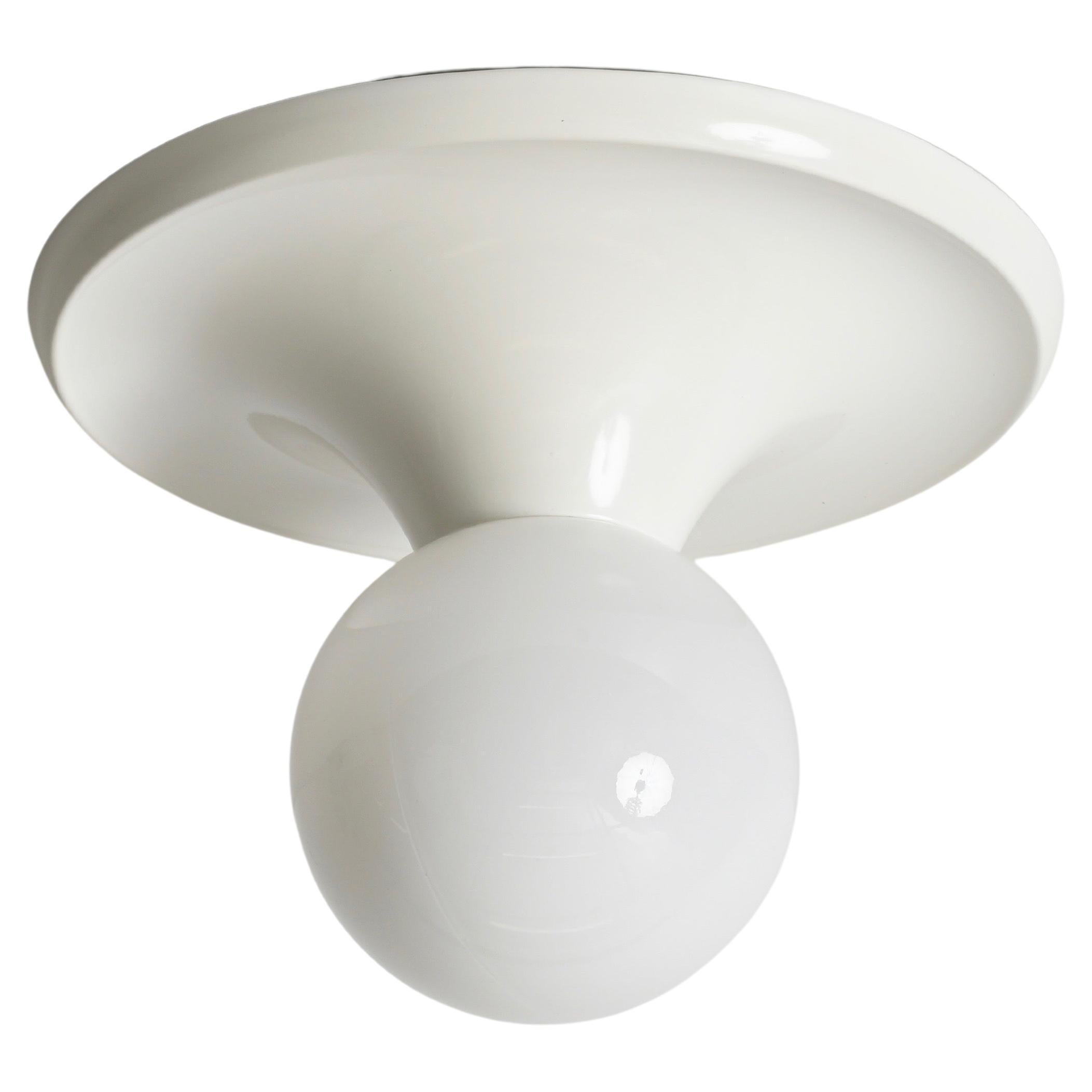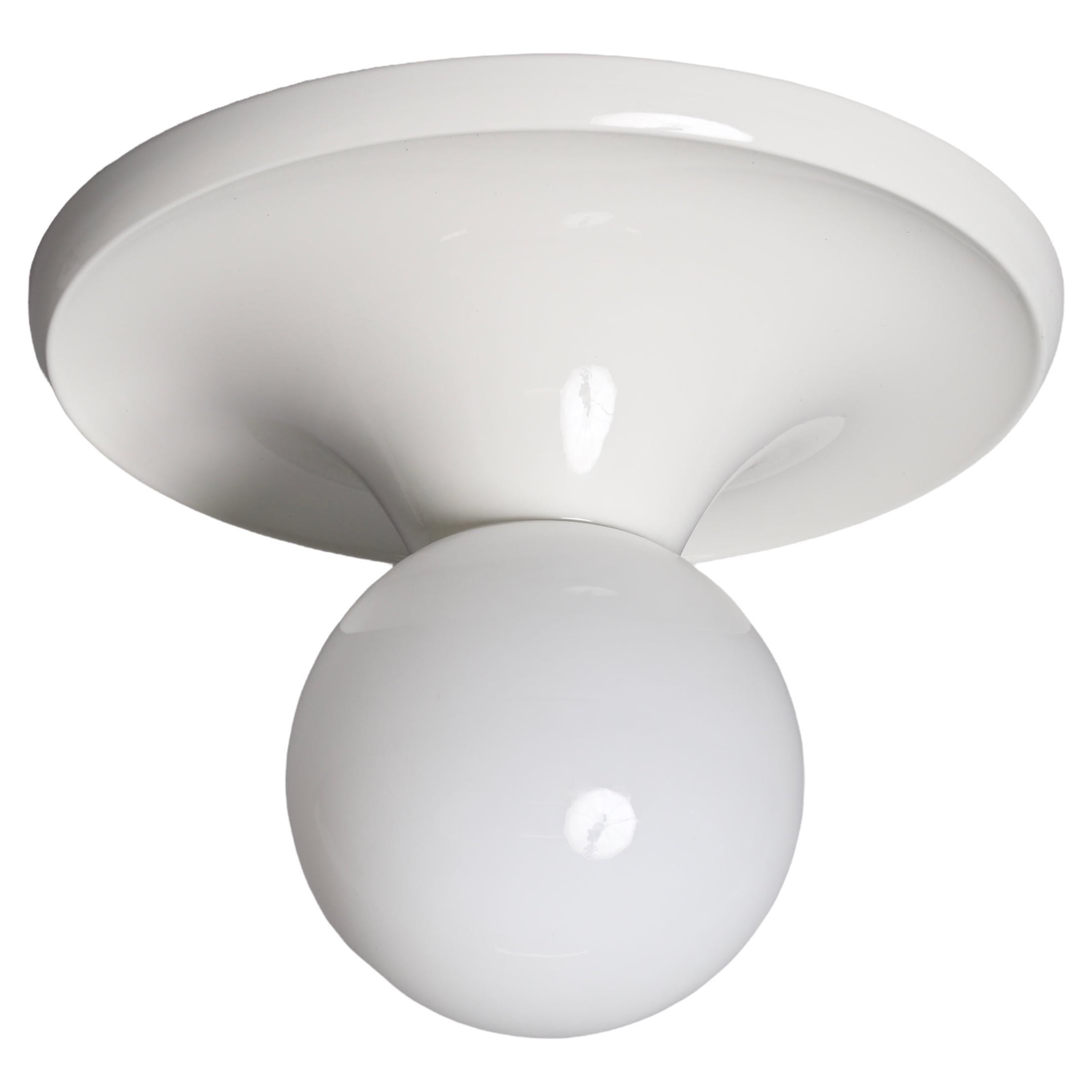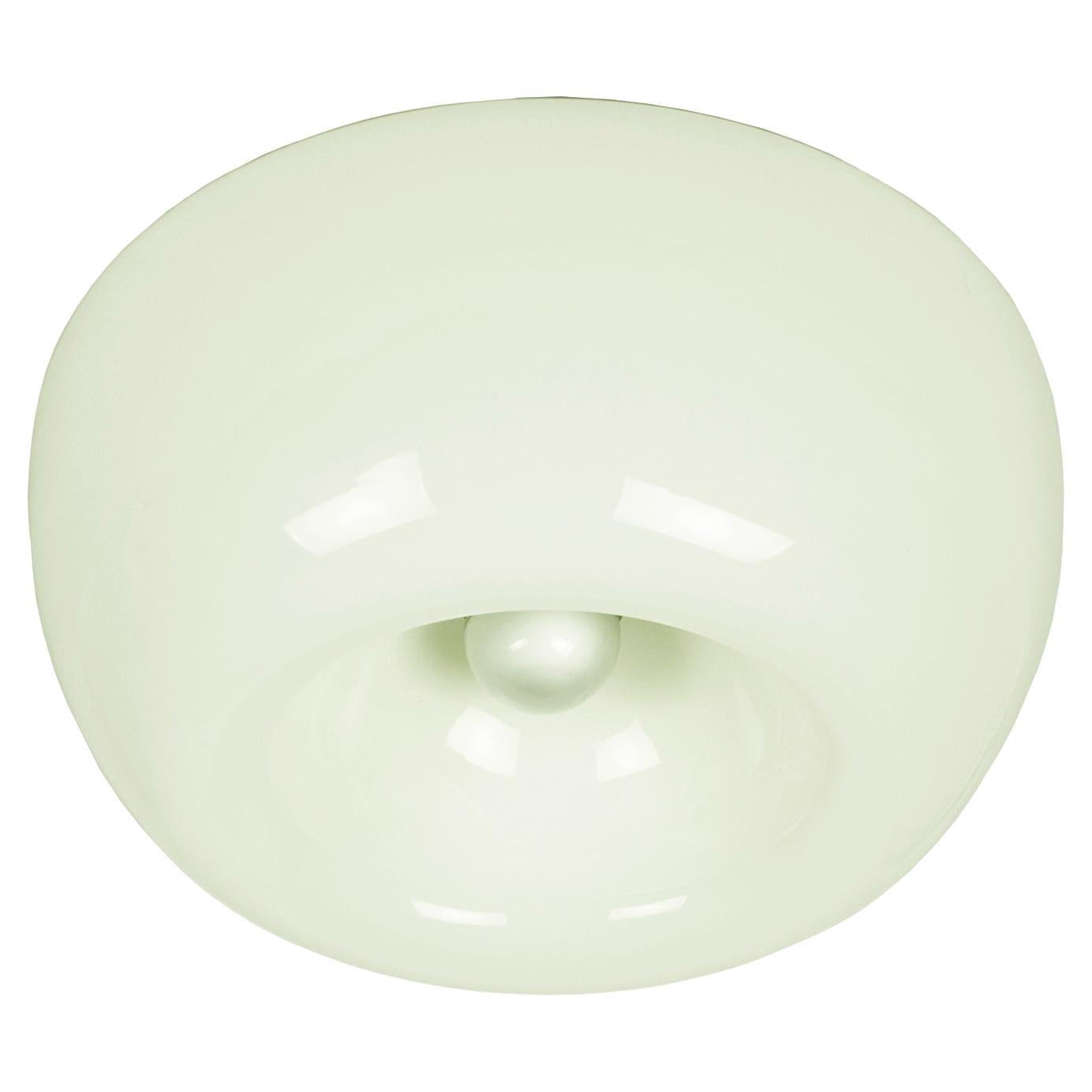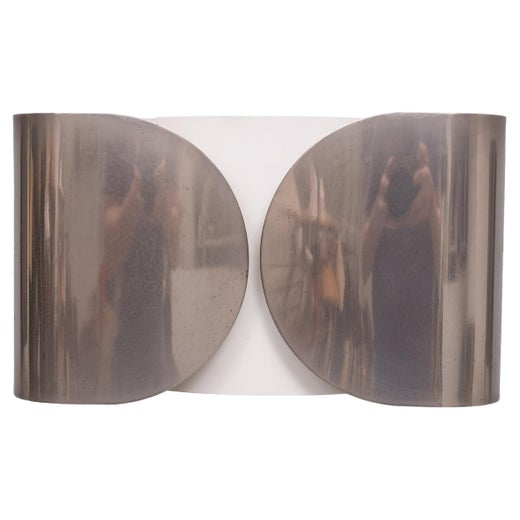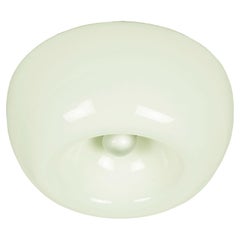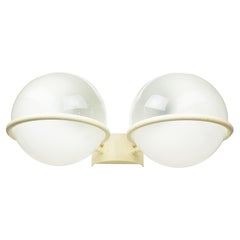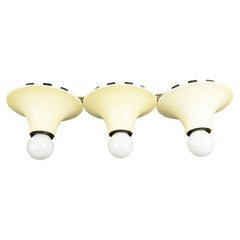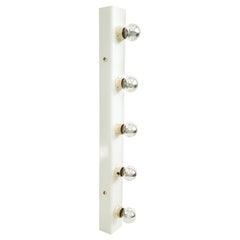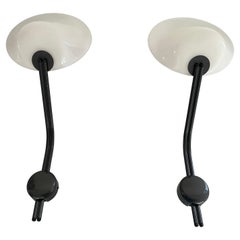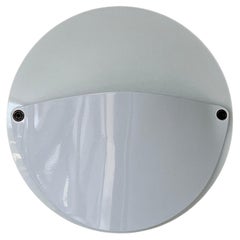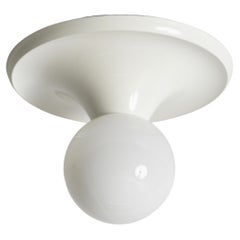2 White Metal & Rubber Wall Lamps Giovi by Achille Castiglioni for Flos, 1976
About the Item
- Creator:Flos (Maker),Achille Castiglioni (Designer)
- Dimensions:Height: 11.03 in (28 cm)Width: 11.03 in (28 cm)Depth: 6.3 in (16 cm)
- Sold As:Set of 2
- Power Source:Hardwired
- Lampshade:Included
- Style:Space Age (Of the Period)
- Materials and Techniques:
- Place of Origin:
- Period:
- Date of Manufacture:1976
- Condition:Wear consistent with age and use. Minor fading. Only one lamp shows visible signs of oxidation as stated in the pictures.
- Seller Location:Varese, IT
- Reference Number:1stDibs: LU3023327902122
Achille Castiglioni
Milanese designer and architect Achille Castiglioni sought to inject personality into all of his work, and found deep inspiration in everyday objects. A legend of Italian mid-century modernism, he created iconic, universally loved table lamps, chairs and other lighting and furniture with his likeminded brothers during the postwar years.
There was the Snoopy lamp, which brings to mind the unmistakable Peanuts character, while the shape of a common street lamp inspired the design behind the Arco floor lamp. Elsewhere, the Toio floor lamp — a provocative fixture in any living room — was made with automotive parts as well as run-of-the-mill recreational gear.
Castiglioni studied the classics at Liceo Classico Giuseppe Parini, art at the Accademia di Belle Arti di Brera and finally architecture and design at the Polytechnic University of Milan. After graduating in 1944, Castiglioni began working with his brothers Pier Giacomo and Livio at the studio they cofounded with classmate Luigi Caccia Dominioni.
Livio left to pursue lighting design and sound technology, leaving Achille and Pier Giacomo to continue to collaborate on various projects. One such design was the iconic Taraxacum hanging lamp for FLOS which featured a resin “cocoon” created with sprayed plastic polymers that protects its steel core and allows for the diffusion of light.
Castiglioni won Italy’s highest award for industrial design — the Compasso d’Oro — seven times, and the Museum of Modern Art was home to his first individual retrospective in the United States. Castiglioni later taught at the Polytechnic University of Turin and at Polytechnic in Milan.
Castiglioni’s designs remain timeless. Some of them can be found in Tokyo’s Living Design Center Ozone, the Triennale di Milano and the Hangaram Art Museum at the Seoul Arts Center.
Find vintage Achille Castiglioni lighting, seating, tables and other furniture on 1stDibs.
Flos
Imaginative lighting is a longtime hallmark of modern Italian design. Following in the footsteps of innovative companies such as Artemide and Arteluce, the company FLOS brought a fresh aesthetic philosophy to the Italian lighting field in the 1960s, one that would produce several of the iconic floor lamp, table lamp and pendant light designs of the era.
FLOS — Latin for “flower” — was founded in the northern town of Merano in 1962 by Cesare Cassina (of the famed Cassina furniture-making family) and Dino Gavina, a highly cultured businessman who believed that artistic ideas espoused in postwar Italy could inform commercial design. The two enlisted brothers Achille and Pier Giacomo Castiglioni as their first designers.
Even before FLOS was formally incorporated, the Castiglionis gave the firm one of its enduring successes with the Taraxacum pendant and associated designs made by spraying an elastic polymer on a metal armature. (George Nelson had pioneered the technique in the United States in the early 1950s.) For other designs, the brothers found inspiration in everyday objects. Suggestive of streetlights, their Arco floor lamp, with its chrome boom and ball-shaped shade sweeping out from a marble block base, has become a staple of modernist decors. Designing for FLOS since 1966, Tobia Scarpa has also been inspired by the commonplace. His folded-metal Foglio sconces resemble a shirt cuff; his carved marble Biagio table lamp looks like a jai alai basket.
In 1973, FLOS purchased Arteluce, the company founded in 1939 by Gino Sarfatti, and it continues to produce his designs. In recent decades, FLOS has contracted work from several noted designers, including Marcel Wanders and Jasper Morrison. As instantly recognizable as they are, many FLOS designs remain accessible. While FLOS lighting is the essence of modernity, its sleek, subtle designs can be used to strike a sculptural note in even traditional spaces.
Browse a broad range of FLOS lighting fixtures at 1stDibs.
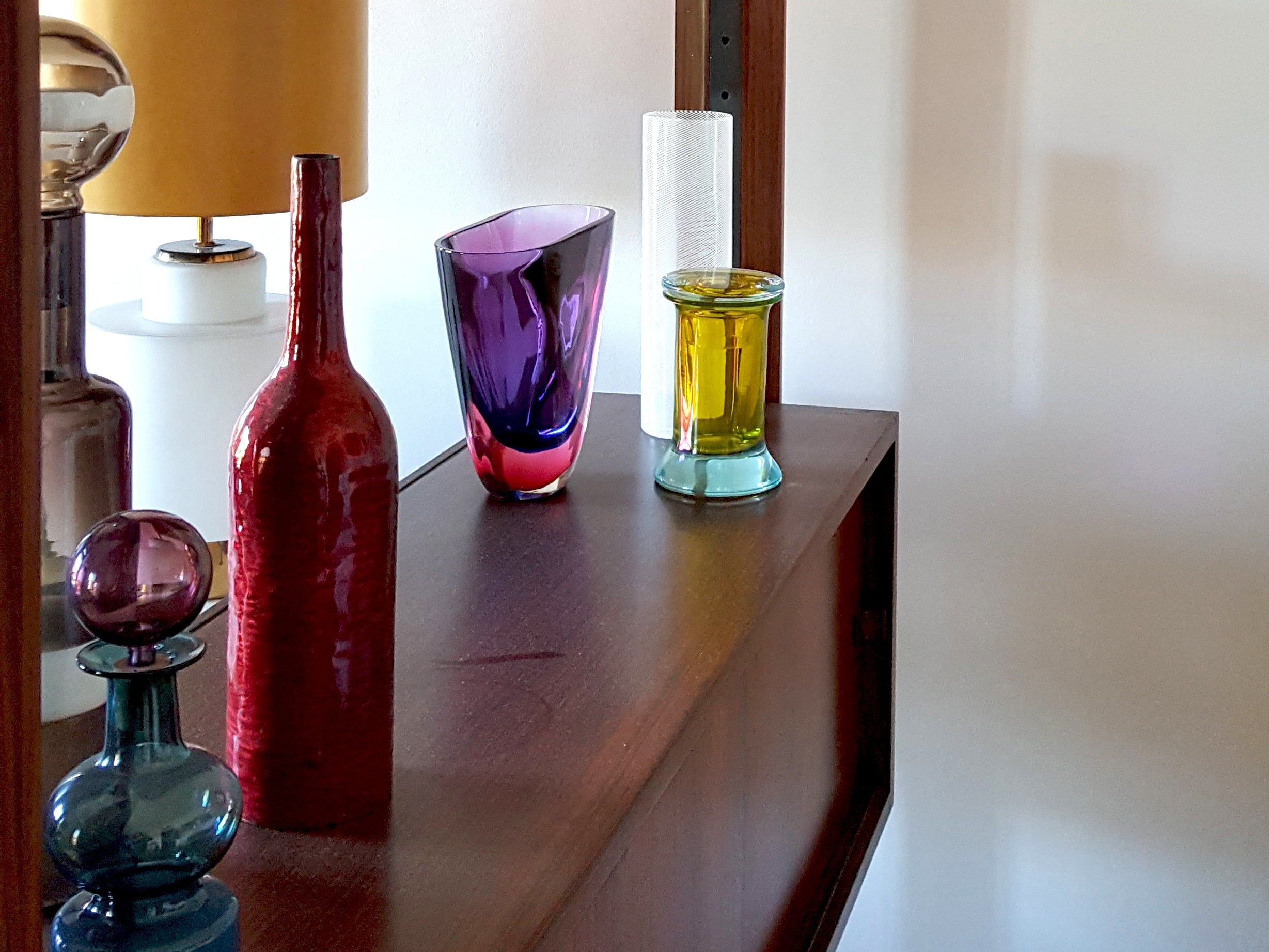
- ShippingRetrieving quote...Shipping from: Varese, Italy
- Return Policy
More From This Seller
View AllVintage 1960s Italian Space Age Wall Lights and Sconces
Metal, Nickel
Vintage 1960s Italian Space Age Wall Lights and Sconces
Metal
Vintage 1970s Italian Space Age Wall Lights and Sconces
Aluminum
Vintage 1960s Italian Space Age Wall Lights and Sconces
Metal
Vintage 1960s Italian Space Age Wall Lights and Sconces
Brass, Nickel, Aluminum
Vintage 1960s Italian Space Age Wall Lights and Sconces
Plastic
You May Also Like
Vintage 1970s Italian Space Age Wall Lights and Sconces
Metal
Vintage 1970s Italian Space Age Wall Lights and Sconces
Metal
Vintage 1980s Italian Mid-Century Modern Wall Lights and Sconces
Metal, Aluminum
Vintage 1960s Italian Mid-Century Modern Flush Mount
Metal
Vintage 1960s Italian Mid-Century Modern Flush Mount
Metal
Vintage 1960s Italian Mid-Century Modern Flush Mount
Metal
